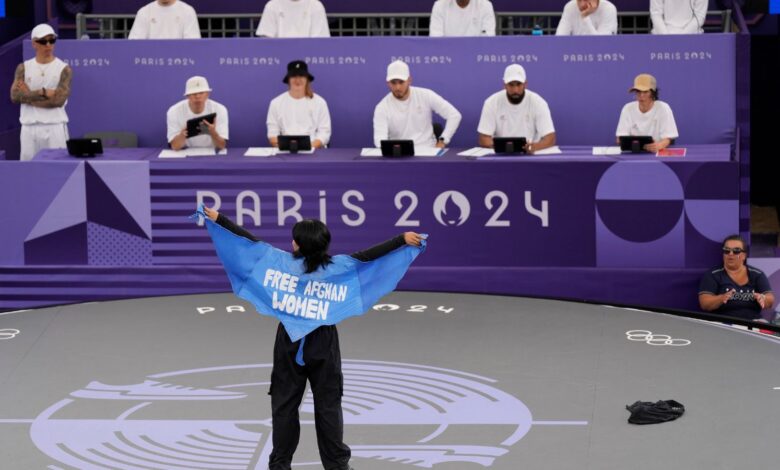Refugee team breakdancer from Afghanan disqualified for displaying ‘Free Afghan Women’ during performance | Sport-others News

Afghan refugee Manizha Talash has been disqualified from the Paris Olympics 2024 after displaying “Free Afghan Women” on her cape during her breaking routine in the competition’s pre-qualifiers on Friday.
The 21-year-old who lives in Spain, wore a light blue cape that had the phrase written on it with large white letters. Talash was “disqualified for displaying a political slogan on her attire,” the World DanceSport Federation said in a statement.
The Taliban who seized the power of the country in August 2021, and say they respect women’s rights in line with their interpretation of Islamic law and local customs – have closed girls’ high schools, placed travel restrictions on women without a male guardian, and restricted access to parks and gyms.
Taliban rule has restricted women’s and girls’ access to sports and gyms in Afghanan. Both the country’s head and secretary general of the National Olympic Committee (NOC) recognized the IOC are currently in exile.
The Paris Games are the third Olympics where a team of refugees is taking part in which Afghanan is represented a contingent of three women and three men.
What details do judges look for in breakdancing?
Stage presence, form, posture, mannerisms and foundation are some of the underpinnings that get gleaned. It’s not just the moves as mental and physical conditioning in terms of endurance, accuracy, strength, speed and control are considered. If two breakers stick a similar freeze, who holds steady longer and pauses stronger is compared.
In a duel, breakers perform figures such as the top rock (stand-up dancing), footwork (leg moves with hands on the floor) and the freeze (the dancer pauses for a few seconds, in sync with the stopping beats.) There’s parallel breaking with spinning moves and dynamic power pivots. Greater originality can prove decisive in split decisions.



